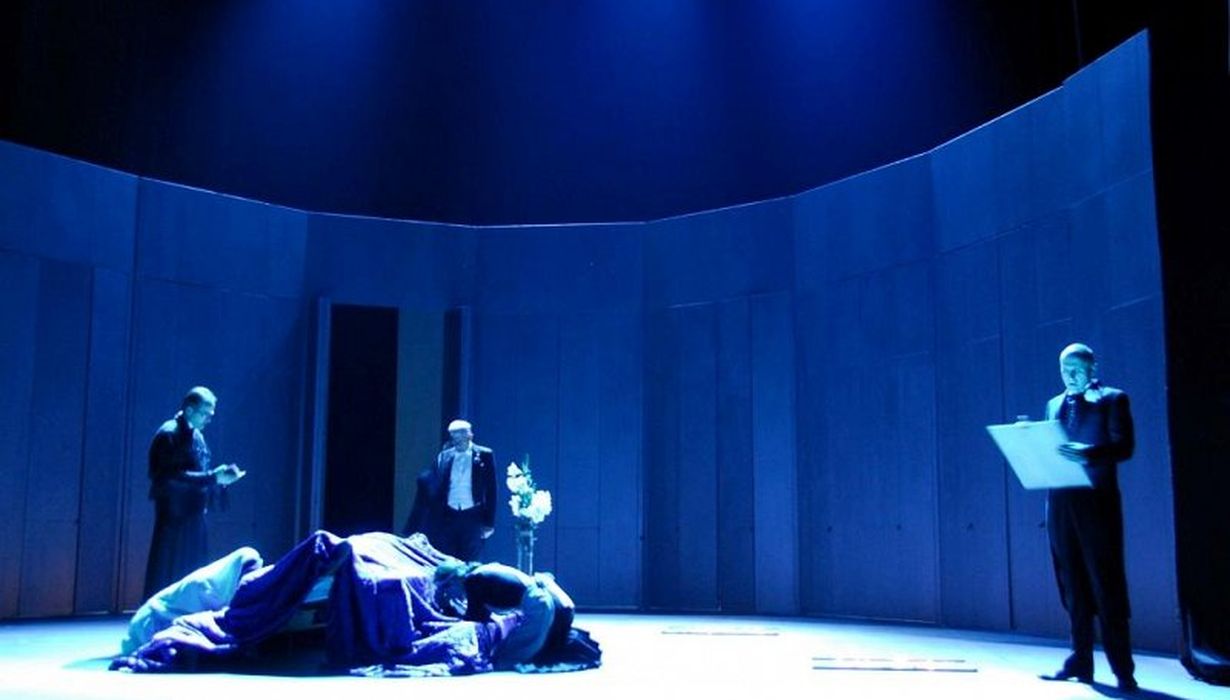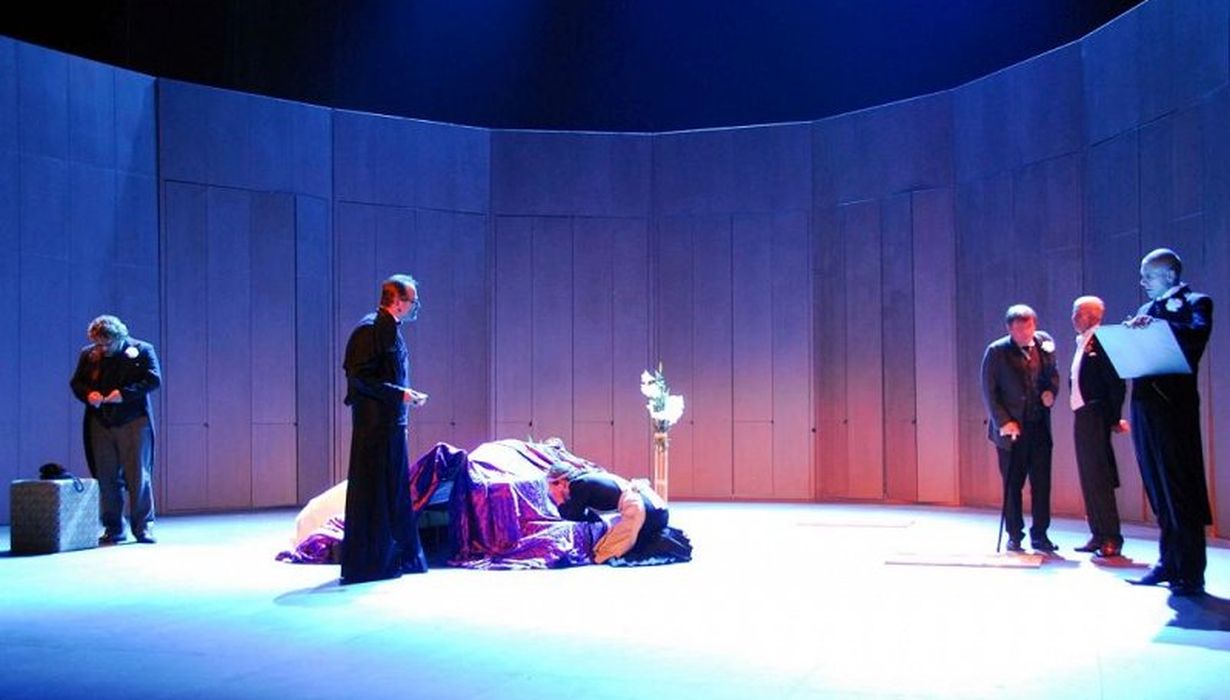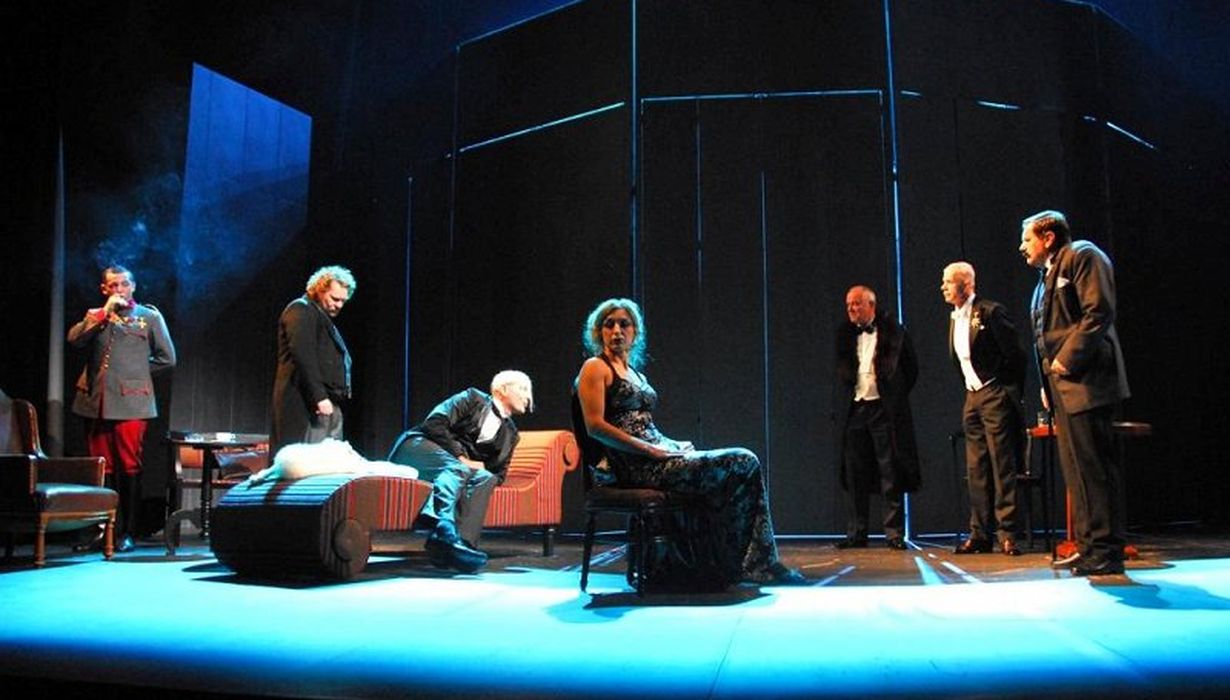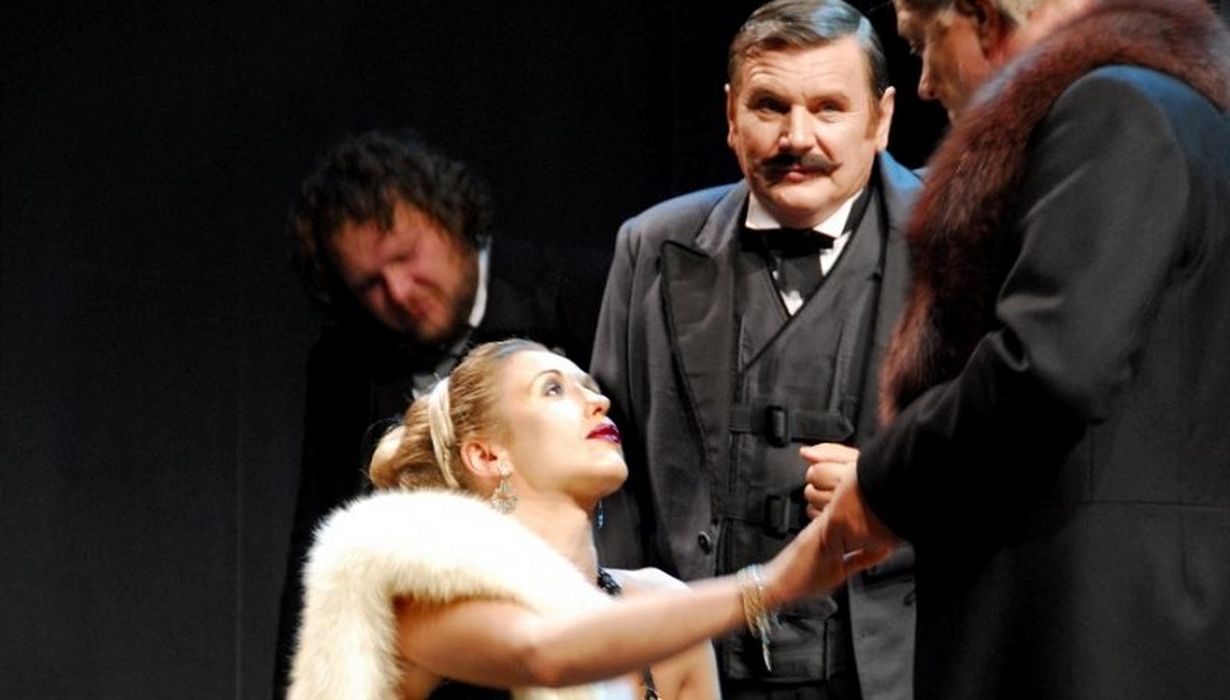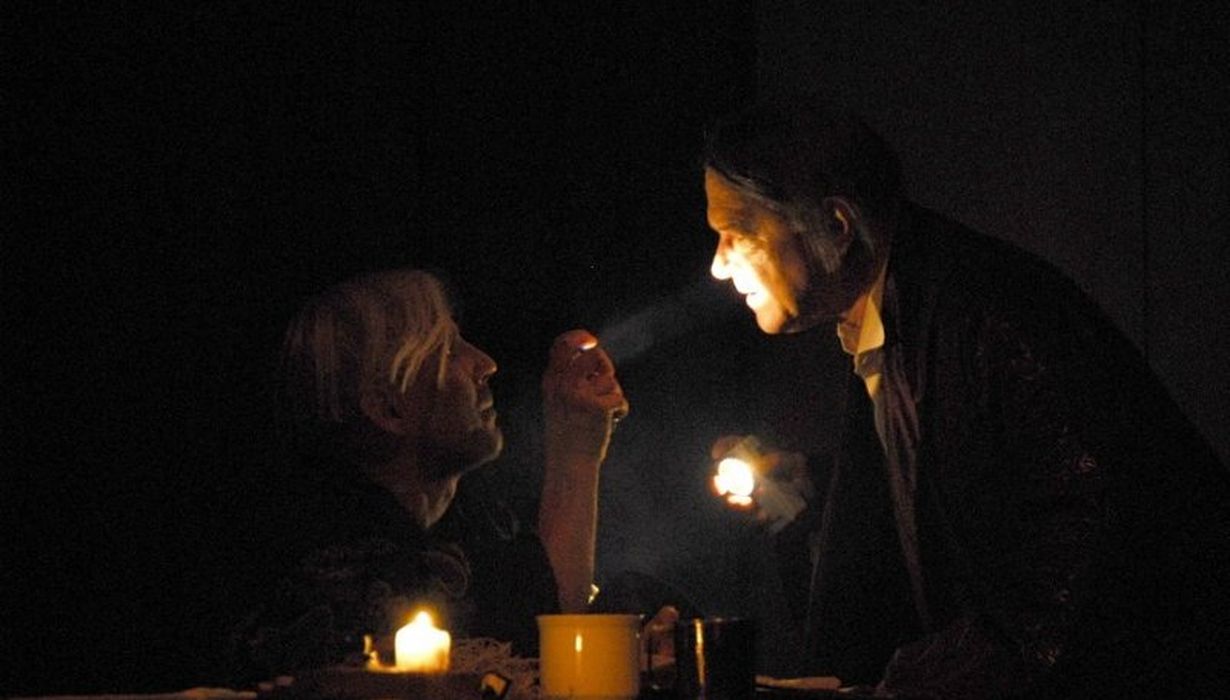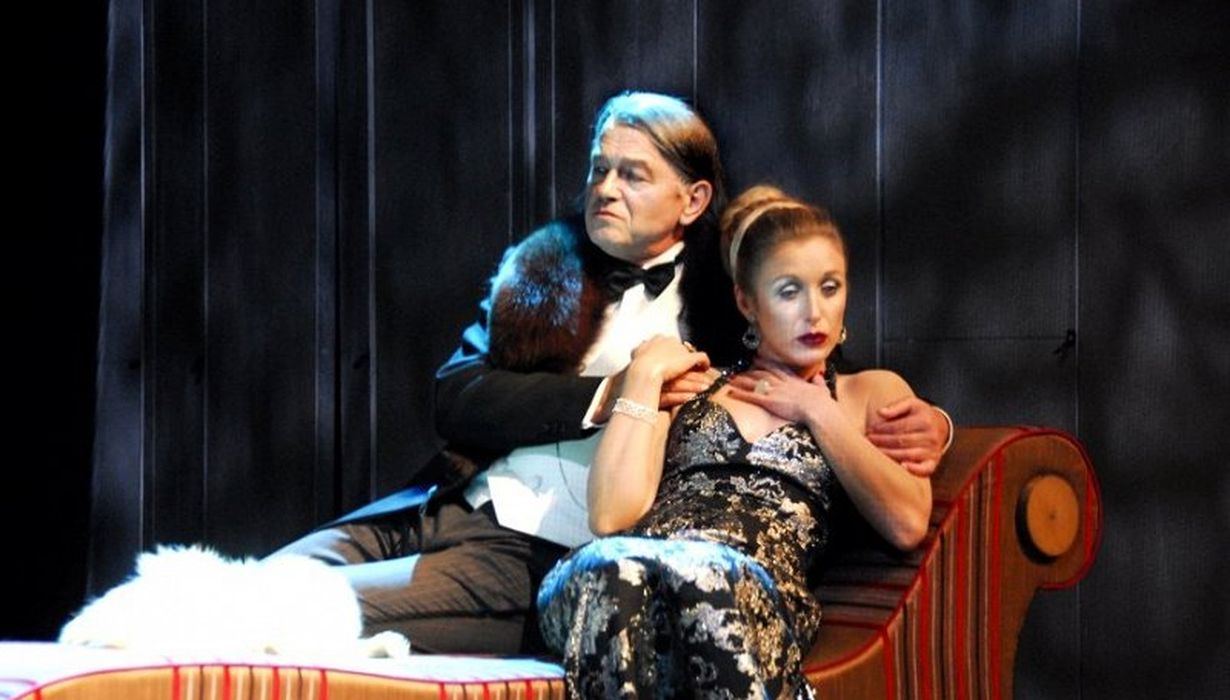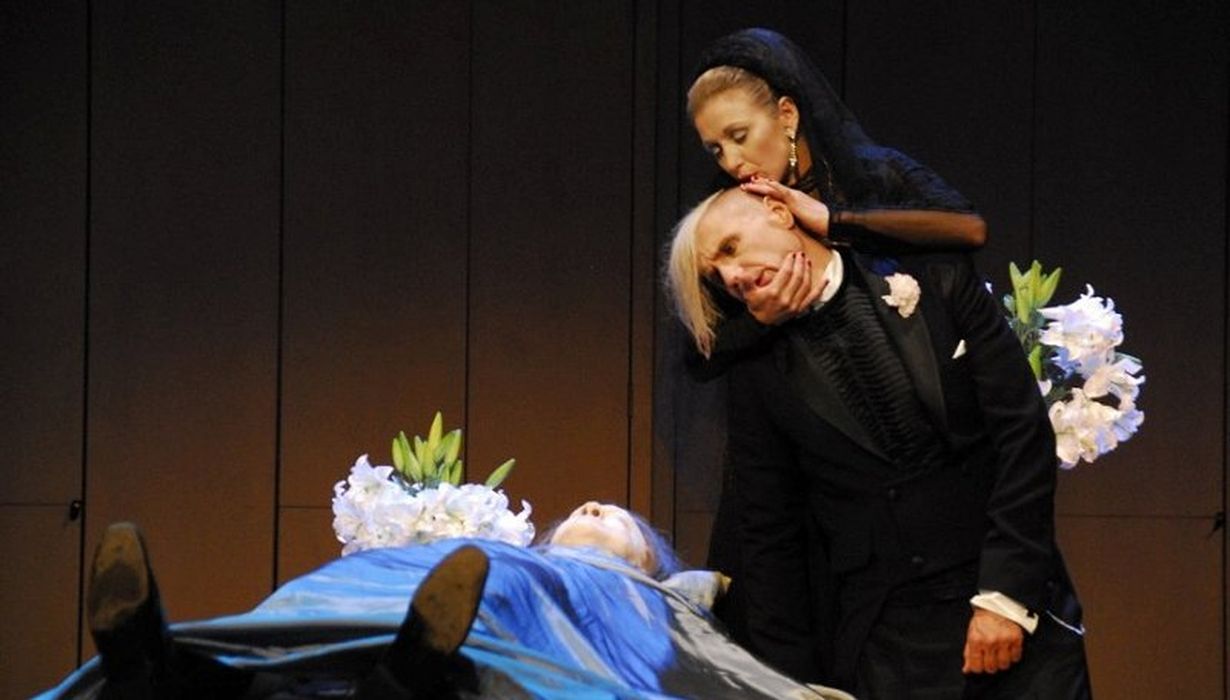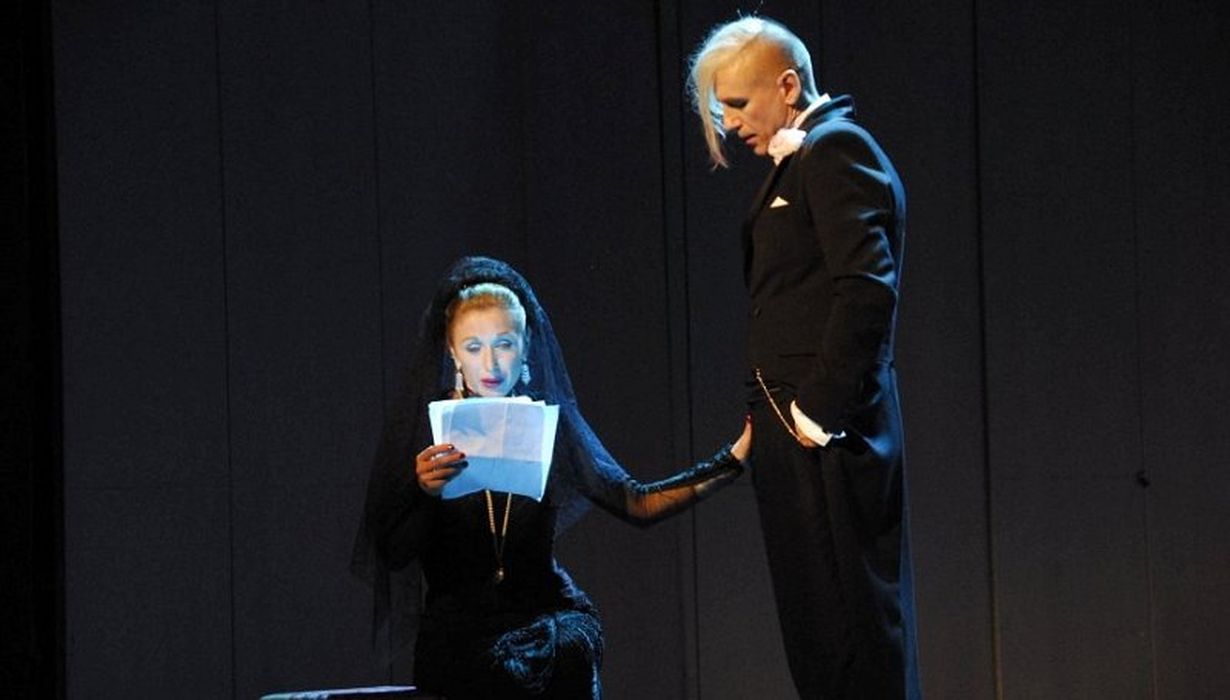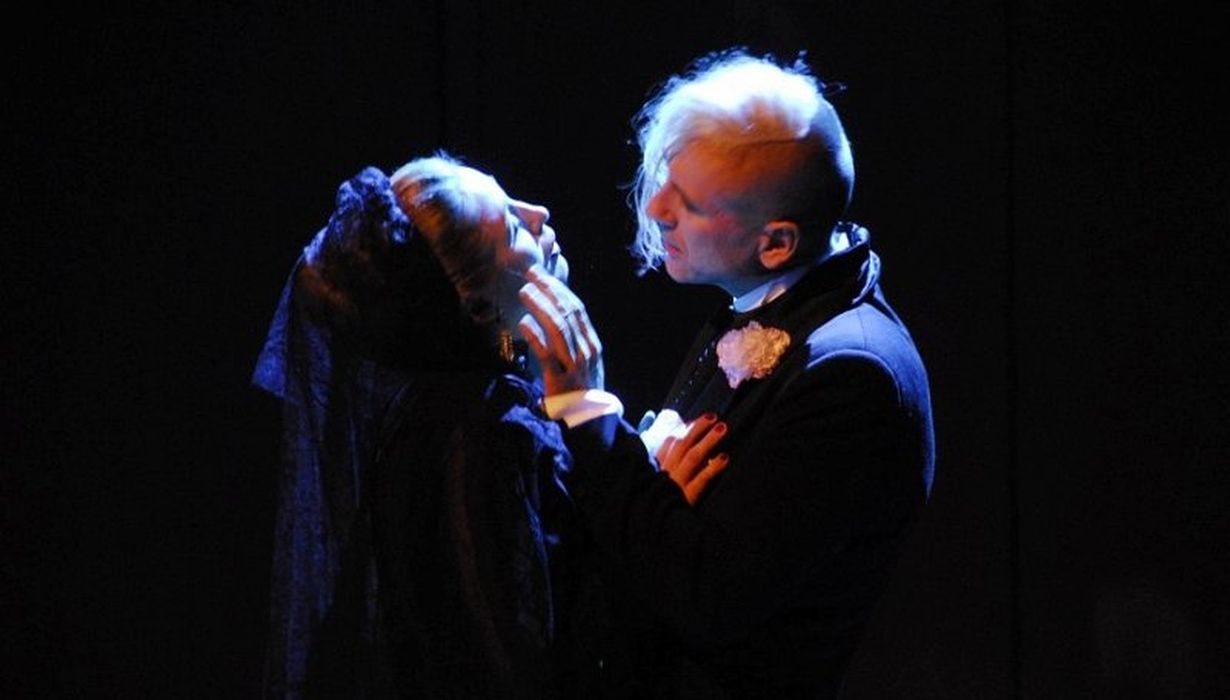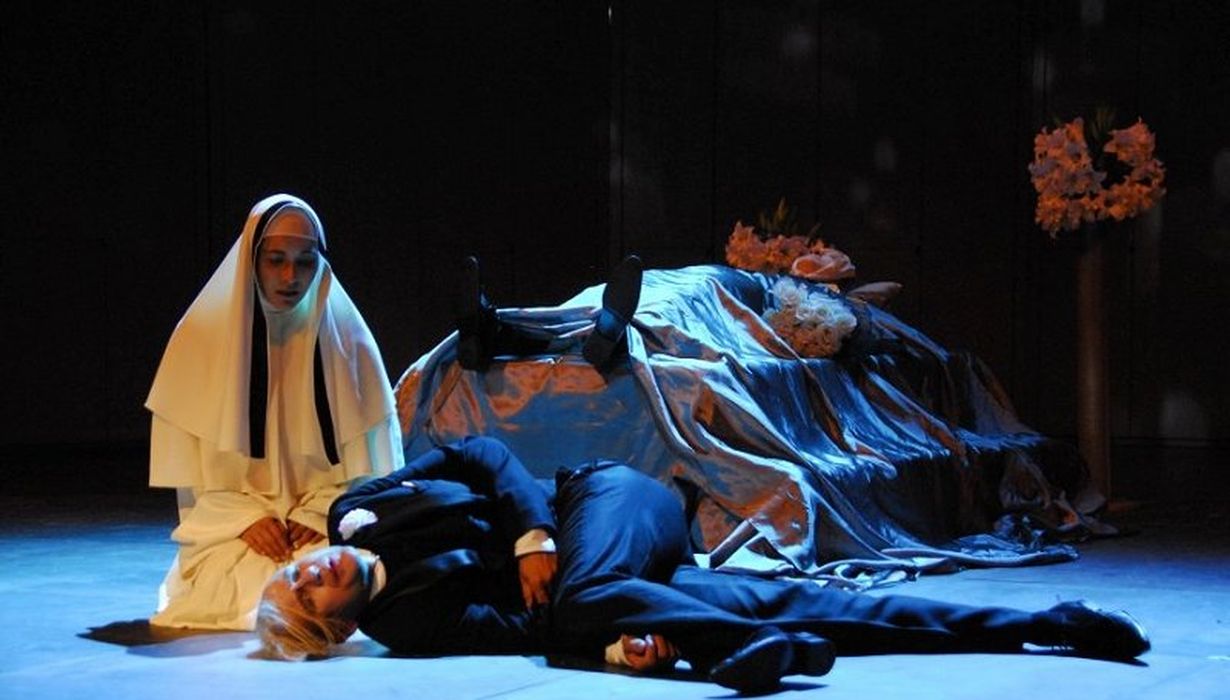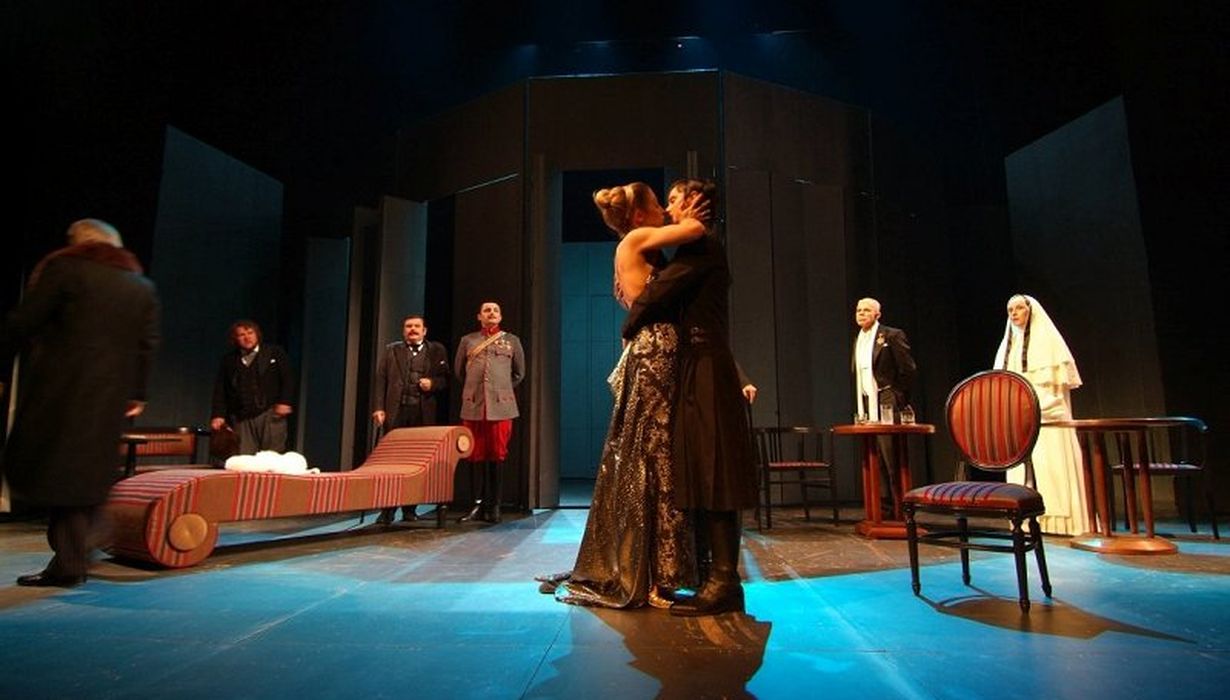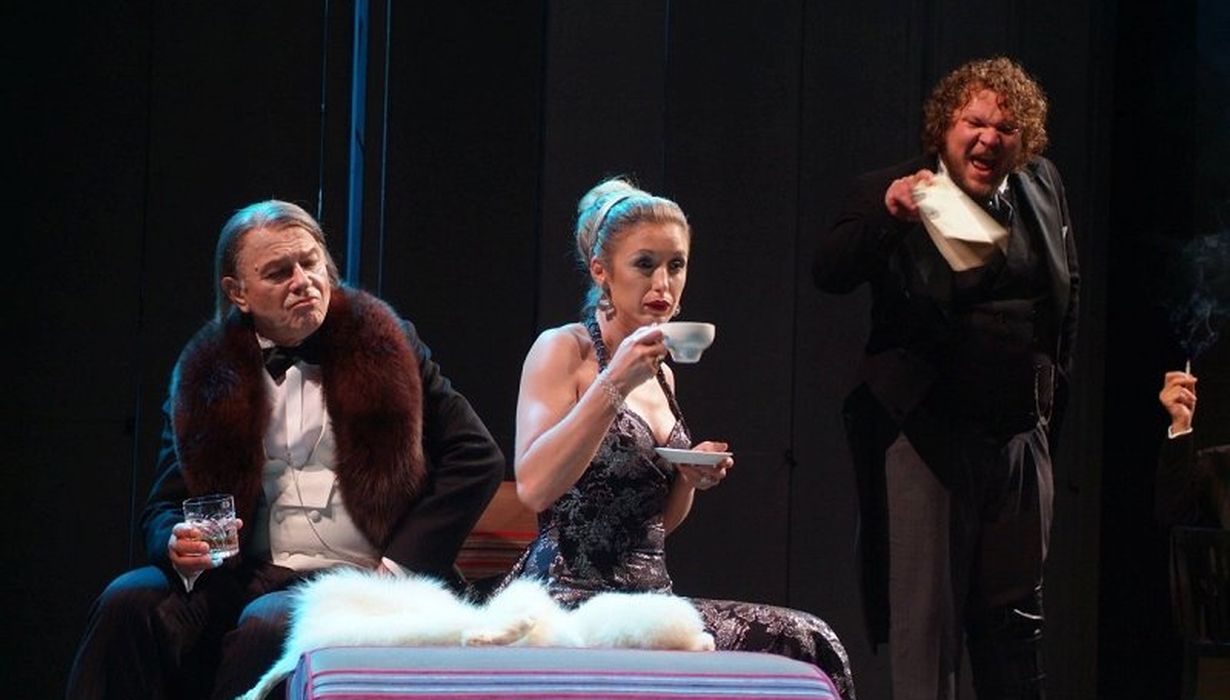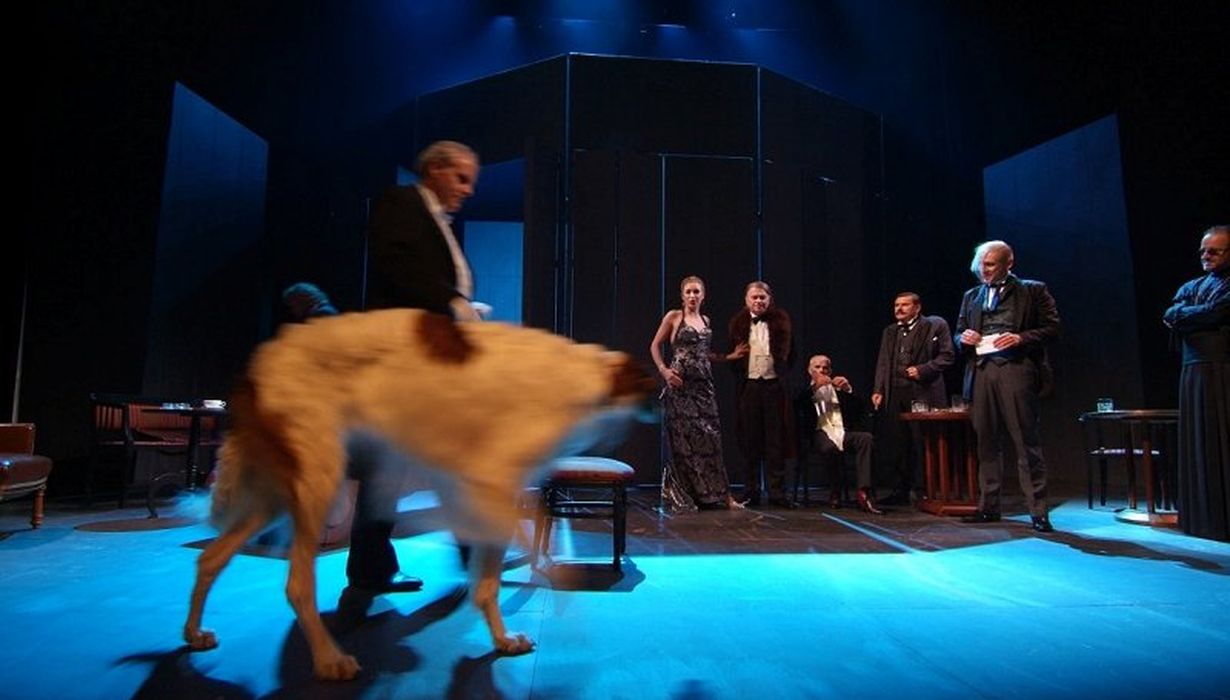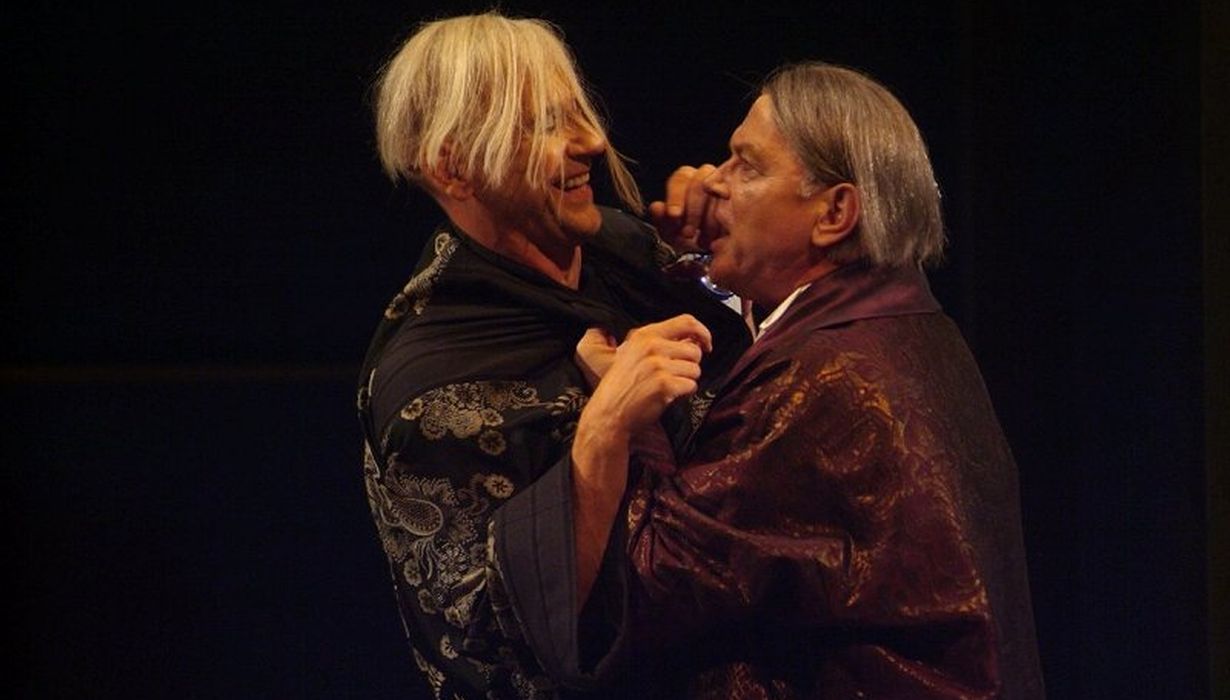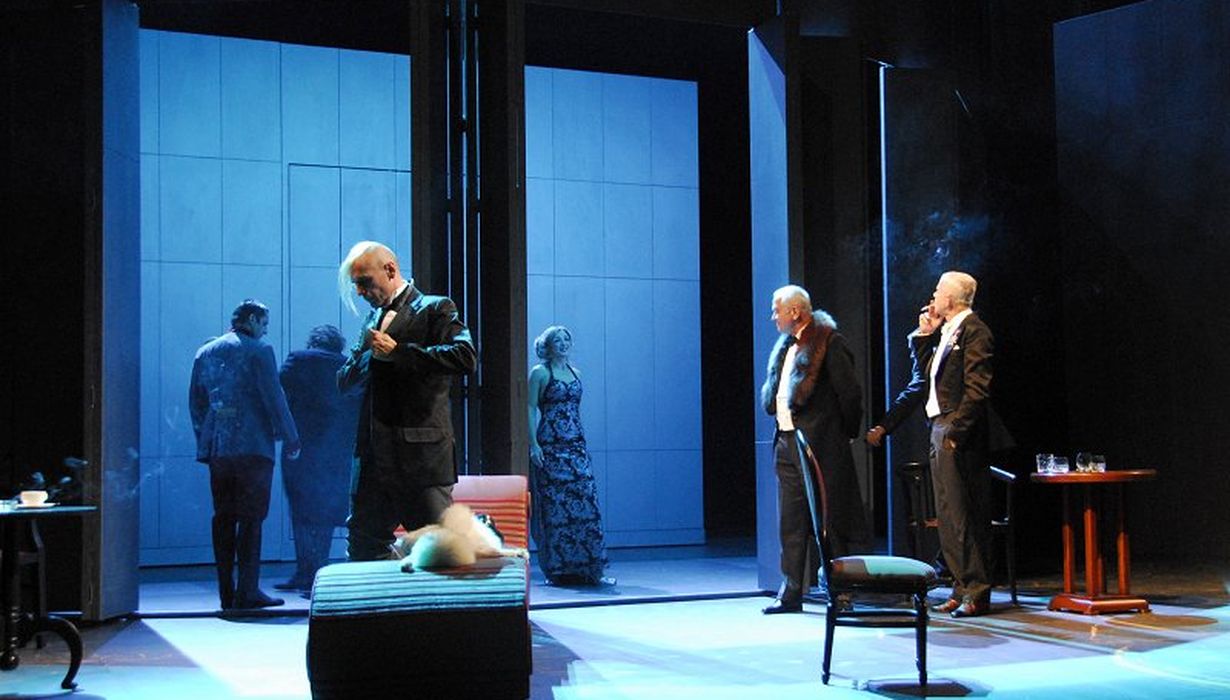PREMIERE
28. september 2006
The Glembays (1929), together with In Agony and Leda - and a number of prose fragments - form a story-line in which Croatia's greatest writer and playwright Miroslav Krleža follows the rise and fall of a family that managed to leave behind their origins, their status of peasants and small traders, and to become - with the help of murder, exploitation, theft, cheating and financial manipulations - members of lower aristocracy. Krleža himself wrote about the Glembays that "they represent, on the whole, a sort of daunting, lucky and talented existence that had struggled out of mud, crime and illiteracy, smoke and lies and managed to reach light, profit, taste, good education - a life for nobility (in short, a passage from darkness to light)".
In The Glembays the family is already one of property and reputation, at first sight an exemplary cell of the bourgeois society. Behind this façade, however, we can observe its putrid structure and the marks of decay in it. Krleža's sharpness is noticeable in both, conceiving dramatic conflicts and in the psychological analysis of personalities: as the play develops, the long concealed secrets are revealed, as well as the lies, resentments, reproaches, greed, pathological passion, hysteria ...
Creators
-
Director
Dušan Jovanović -
Dramaturg
Tea Rogelj -
Language Consultant
Srečko Fišer -
Set Designer
Marko Japelj -
Costume Designer
Jelena Proković -
Composer
Drago Ivanuša -
Light Designer
Samo Oblokar -
Video by
Nejc Saje -
Assistant to Set Designer
Aleksander Blažica
Performing
-
Bine Matoh/ Helena Peršuh
k. g.
/ Radoš Bolčina
k. g.
/ Marjuta Slamič
k. g.
/ Ivo Barišič
k. g.
/ Primož Pirnat
k. g.
/ Jože Hrovat
k. g.
/ Matjaž Tribušon
k. g.
/ Marko Plantan
k. g.
/ Gorazd Jakomini
k. g.
/ Milan Vodopivec
k. g.
/ Dušanka Ristić
k. g.
In the Media
The play unwinds in a single night in Zagreb, on the eve of the First World War, and holds the spectator's attention while it discloses the story about the demise of the family Glembay /.../, it entertains, challenges thinking, triggers emotions; in fact, it triggers everything that makes a spectator enjoy theatre.
Artur Lipovž, Primorska kornika, TV Koper, 28 Sept. 2006
The climax of this performance is a violent clash of Glembay father and Glembay son in the second, pivotal act. While Radoš Bolčina cleverly uses Hamlet-like madness to portray the black sheep of the family, the bohemian and visibly eccentric, but lucid Leone, who returns to his family after eleven years and begins to uncover old crimes, Bine Matoh masterly degrades the old Glembay: at first a haughtily cold banker gradually changes into a contrite old man, haunted by his murky past and slowly overpowered by the horrifying present until they finally both devour him. Jovanović's staging charges both deaths with erotic passion: the old Glembay, tired of debauched life, bent under a pile of crimes, his wife's infidelity and the ever growing pressures from the press, dies of a heart attack in the arms of his second wife, the promiscuous baroness Castelli, while the latter dies at the end of the play, when the young Glembay pulls her into embrace and stabs her with scissors.
Andraž Gombač, Primorske novice, 2 Oct. 2006
Consistent in their respect for the author, Jovanović and the dramaturg Tea Rogelj have not significantly shortened the text, but the three-hour performance is nevertheless worth seeing, if only, to se the masterpiece of Radoš Bolčina, whose Leone Glembay reflects Hamlet.
Kim Cuculić, Novi list, Croatia, 3 Oct 2006
Quite a few radicalisations can be observed in Jovanović's direction, and they are solidly based in the text; he works the Glembay logic, which has no mercy for anyone, also on the only family member who remains outside and pure, on the Dominican sister Angelica. This makes her kissing Leone and the reproach about her lover ring true and not a simple result of a momentary cross-accusations. Above all, this decadent stratum of the society is very eroticised; the old Glembay literary dies between his wife's thighs, whereas her seduction of Leone in the play's finale is direct enough to emphasise her street provenance; her relationship with her son is perverted and incestuous, and even her death happens during her last kiss: Leone slaughters her in front of our very eyes, in a clinch, at the same time deadly and erotic. Dramatis personae are also consistently emphasised; Leone, for example, also visually: with his half-shaven head he immediately reminds us of a modern rocker, but he is elegant. Radoš Bolčina creates him as a borderline personality: no longer simply a reflective observer and an artist, but a twitching neurotic; he is less a truth-seeker but indeed more a candidate for a sanatorium who cannot be still for even a moment, keeps smoking compulsively and is generally hyperactive. His tension is shown not only in gestures, but also in his raised voice, which is almost breaking. Indeed, several times he does seem on the verge of crying and hysterical, but he immediately pulls back.
The other pole is represented by Bine Matoh's old Glembay and his, at times extremely powerful, presence - despite the prevailing acting minimalism: sovereign, calm, dignified, and up until the final reckoning, which happens during an electricity blackout and is staged as fencing with battery torch-lights, a veritable pillar of society; but he is progressively more and more broken, and his final breaths long and touching. Helena Peršuh is Baroness Glembay, dignified and poised until the finale, she cannot be captured or defined and is therefore fatal; her lasciviousness is restrained and carefully dosed, and only for certain eyes, not free-for-all. We need to mention also Primož Pirnat's Puba, who is the most dynamic character in the otherwise static first act, where his juridical explication seems neurotic and exaggerated - he also forms part of this gallery of borderline characters, and he is more determined by intolerance, haughtiness and complacence than he is by his physical handicap; and also Matjaž Tribušon's Silberbrand, a sly, Tartuffe-like cleric.
Matej Bogataj, Delo, 3 Oct. 2006
The outset is extremely fascinating - and this is not simply a description of its visual paraphernalia. From the very beginning, the play of light and shadow is impressive, and the scenography later turns out to be a precise, well considered support for the action. Marko Japelj creates the space in two parts: the front part, parallel with the proscenium, is the active one where most of the action takes place; the back half, shaped as a semi-circle with several door openings, serves as its empty antipode throughout the first part of the performance - the wall of the hollow cylinder is also used as a projection screen. In the second part the scene is narrowed to a room and in the third the cylinder turns from a convex form to a concave one - the interior and the exterior thus take place. Thus in the (too) strong final emphasis between the door, which they simultaneously open, the former insiders now stand on the outside and silently stare inside, towards the bier. A seemingly small step for the scenography, but a big one for the performance as a whole. /.../ Maybe we should especially mention Bine Matoh in the role of the main Glembay. At first he seems detached, calm, almost gentle, reserved in his power, only to mightily explode in the second part, in the famous dialogue with Leone.
Anja Golob, Večer, 6 Oct. 2006
Festivals and performances abroad
42th Borštnik Festival, Maribor, 2007
6. 10. 2007, 20.00. SNG Nova Gorica.
12. 10. 2007, 19.30. SLG Celje.
13. 10. 2007, 19.30. Borštnikovo srečanje Maribor.
8. 1. 2021, 23.00. SPLET.




